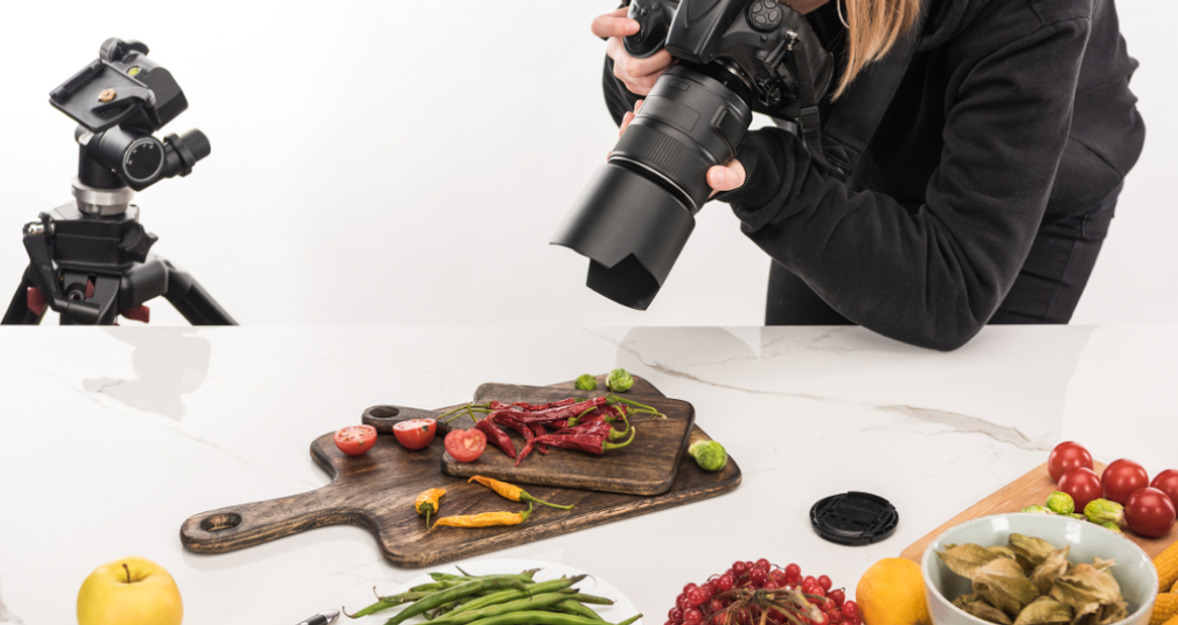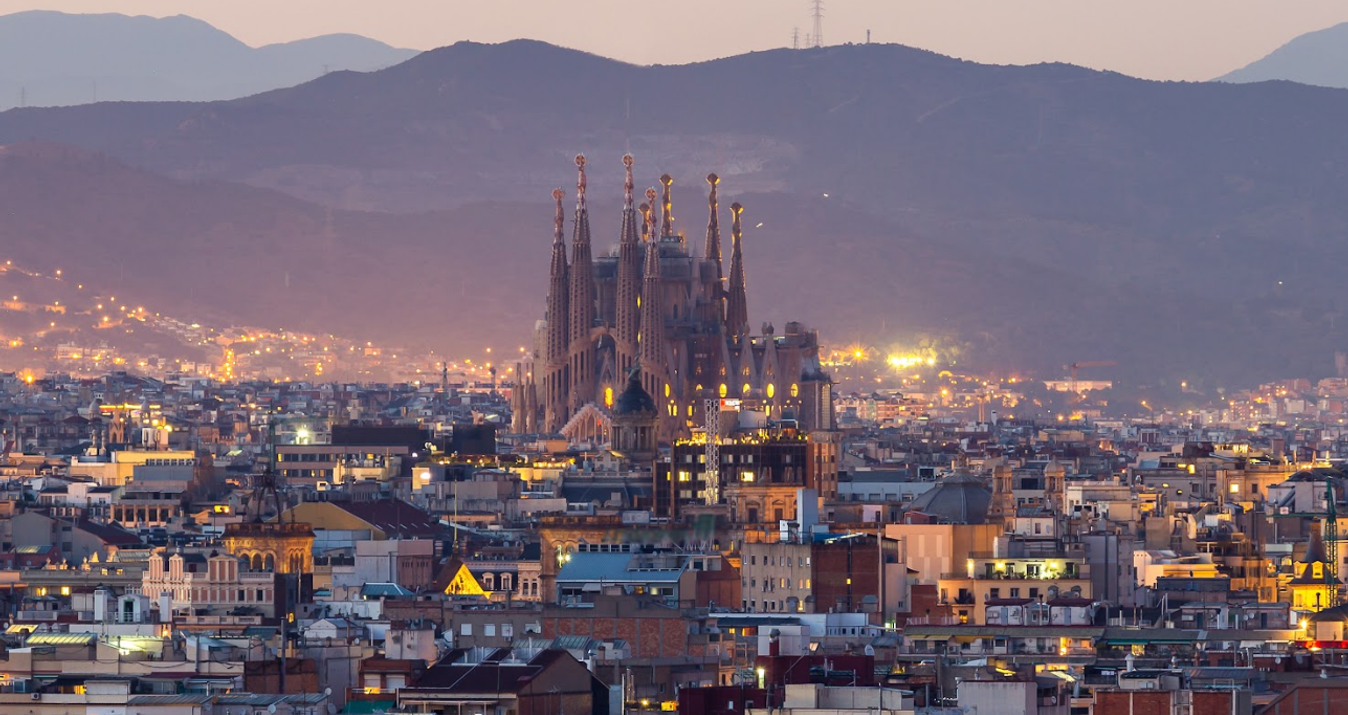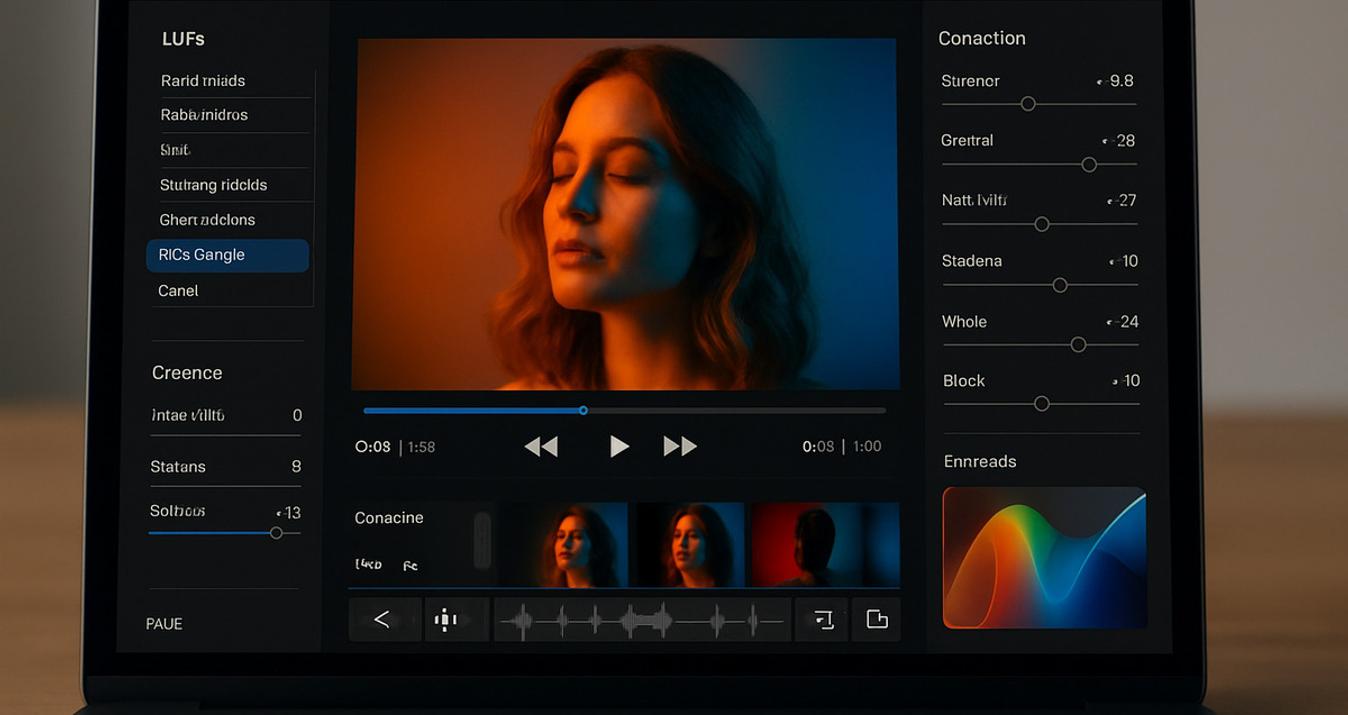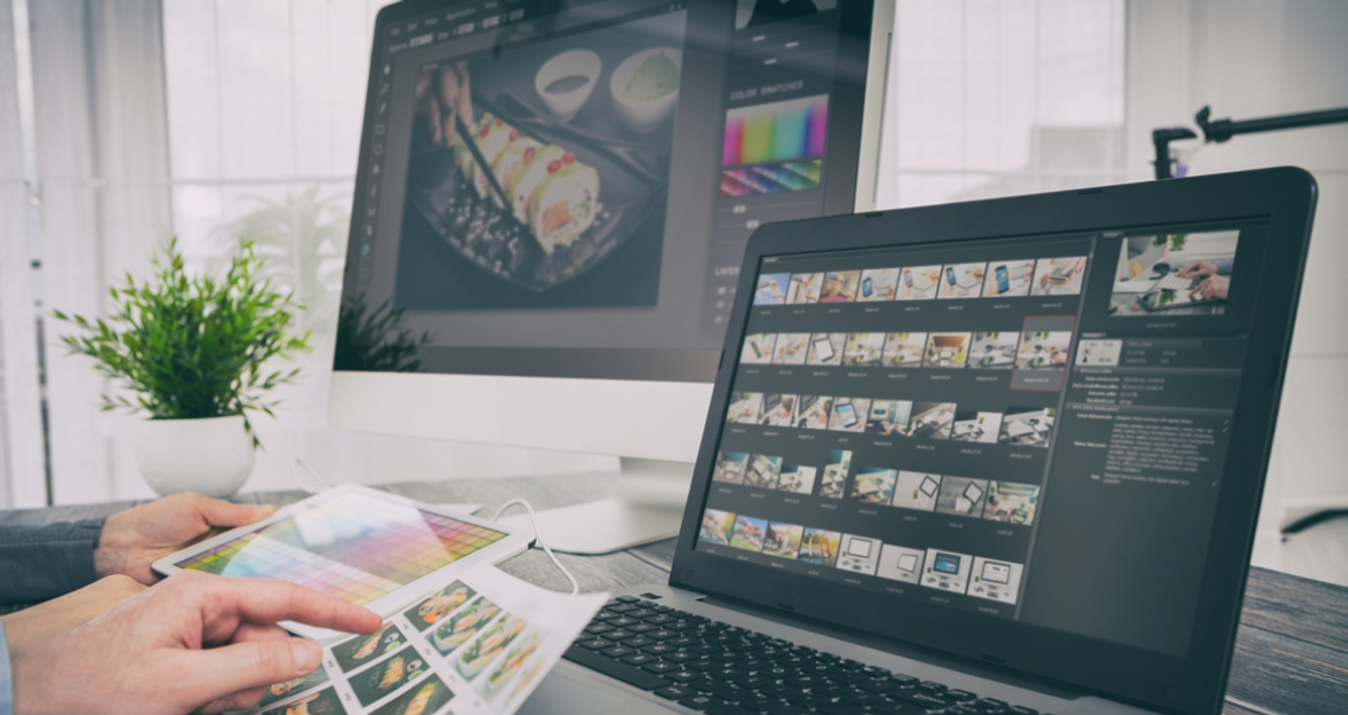Commercial Photography: How to Get Started
Last Updated on October 02, 2025

Learn the commercial photography definition, how it connects art and marketing, and the first steps to start a career in this creative field.
It would seem — what do photography and marketing have in common? When it comes to photo shoots, we envision a person in various images, such as models, family photos at home, or in the studio. But products also have photo shoots, if they can be described that way.
Commercial photography is a distinct art form, a branch of marketing, and a manifestation of a photographer's creativity. So what does it look like, and what does it really mean?
What Is Commercial Photography?
 Commercial photography is the practice of creating images that highlight the value of products or services and present them in a way that encourages purchase. Instead of focusing on personal or family portraits, this type of work serves businesses — from product shots to service imagery. Successful commercial photographers often see their work published in magazines, catalogs, books, and across websites, building careers at the intersection of art and marketing.
Commercial photography is the practice of creating images that highlight the value of products or services and present them in a way that encourages purchase. Instead of focusing on personal or family portraits, this type of work serves businesses — from product shots to service imagery. Successful commercial photographers often see their work published in magazines, catalogs, books, and across websites, building careers at the intersection of art and marketing.
What Is the Purpose of Commercial Photography?
The purpose of commercial photography is to help businesses sell. It creates visuals that attract attention, communicate brand values, and support campaigns across web, social media, print, and advertising.
Good commercial photos showcase products accurately, build trust through consistent presentation, and guide the viewer toward action — whether that’s clicking, visiting, or buying. By improving clarity and reducing product returns (through true-to-life color and detail), strong photography can shorten marketing cycles and boost ROI (Return on Investment).
Why Is Commercial Photography Important for Businesses?
 Every modern business uses the internet in some form or another. Design and presentation matter for every website or solo online business. The focal point you select in your pictures will expose all of this. But what exactly do strong images give to a business in practice? Here are the key benefits:
Every modern business uses the internet in some form or another. Design and presentation matter for every website or solo online business. The focal point you select in your pictures will expose all of this. But what exactly do strong images give to a business in practice? Here are the key benefits:
Trustworthy business relationships. No one will agree to collaborate without a high-quality performance. Mediocre stock pictures demonstrate a lack of competence or experience, neither of which is a desirable characteristic. As a result, commercial photography serves as a business calling card.
Upgraded sales. The online environment is quite harsh, so images with no blur or loss of grain are required. This approach benefits both buyers and customers by providing a clear visual representation of the product's appearance and/or components, as well as a click-through rate and better conversion.
Versatility. The same snaps can be used across several platforms, including online presence, social media accounts, printed brochures, press releases, and advertisements. Having an image library makes it a breeze to create PR campaigns, seasonal promotions, and product debuts.
Why do businesses use commercial photographers? It's quite simple. If you capture good images, it might be viewed as a long-term investment. You'll agree that losing sales is far worse for a business than adding one more shooting session.
Benefits of Commercial Photography for Marketing and Branding
After fine-tuning their business procedures, startups launch pages on Instagram, TikTok, and other platforms. This is done to achieve two objectives: fast reputation and audience growth.
Striking visuals in social media posts generate more traffic than traditional fliers. Captivating images help a brand to stand out among a crowded social media audience. Marketing in this sense operates as follows.
Commercial photography helps brands not just look polished, but also build a deeper connection with their audience. Here’s how:
- Product demonstrations. Goods presentation generates a desire to purchase, enhances conversions, and raises sales. However, it is necessary to underline the benefits beyond the photographer's view of the snapshot.
- Call-to-action (CTA) elements. Organize your picture so that link text or buttons do not detract from the overall image. Consider the format size, whether online or brochure.
- Emotional connection. When photographing a model, pay attention to her facial expressions. Admiration, passion, and melancholy should be natural. Furthermore, the background should be properly selected to minimize post-processing time.
How Commercial Photography Drives Sales and Engagement
The number of people using online resources to learn about products and companies is steadily expanding. As a result, brands are working to establish a library of pictures that attract, promote, and sustain attention.
For example, Framebridge timed its ad to coincide with Father's Day, choosing an eye-catching photo in Instagram Stories. In just one month, Framebridge generated 2.4 times more purchases than through other ad markets, including 29% more sales than its Instagram feed advertising at a 71% cheaper cost per acquisition (CPA).
This case illustrates how carefully chosen commercial photography can amplify ad performance, reduce marketing costs, and strengthen customer engagement. Companies that invest in professional visuals build stronger connections with their audience and achieve higher conversion rates compared to those relying on generic imagery.
Types of Commercial Photography
Commercial photography spans many genres. Each has its own goals, techniques, and clients. Here are the main types and what makes them unique.
Fashion Photography
 Commercial work that presents clothes, shoes, and accessories with business goals in mind — showing a collection, supporting sales, shaping brand style. Formats typically include editorial, campaign, lookbook, catalog, e-commerce, and street-influenced editorials.
Commercial work that presents clothes, shoes, and accessories with business goals in mind — showing a collection, supporting sales, shaping brand style. Formats typically include editorial, campaign, lookbook, catalog, e-commerce, and street-influenced editorials.
Fashion photography covers visual work that focuses on clothes, shoes, and accessories for commercial purposes. Its role goes beyond showing garments — it communicates a brand’s identity, defines seasonal trends, and sets a tone for marketing campaigns. Materials from fashion shoots appear in catalogs, online stores, showrooms, and digital ads. Editorials often highlight storytelling, while lookbooks and e-commerce imagery emphasize clear presentation.
For brands, such imagery becomes a consistent tool for shaping customer perception, attracting press attention, and supporting sales across multiple channels. A clear brief, mood board, correct fit, color/texture control, midtones, tethered capture for approvals, and defined licensing help deliver consistent, publishable results across channels.
Product Photography
 Have you ever browsed a marketplace and instantly clicked the “Buy” button just because of the photo? That’s the power of product photography.
Have you ever browsed a marketplace and instantly clicked the “Buy” button just because of the photo? That’s the power of product photography.
Imagine: a local ceramics brand launches handmade cups. Strong product images can quietly lift intent to buy. A simple comparison — kitchen-table shot vs white sweep with soft side light and reflector — often reveals form and finish more convincingly.
This genre is applied across e-commerce platforms, marketplaces, print catalogs, and digital advertising. Strong product visuals can directly influence purchase intent, making the item more tangible to customers shopping online. Companies invest in such photography to highlight details, minimize uncertainty, and differentiate their goods from competitors. Consistent imagery helps create trust, supports brand positioning, and makes products adaptable for both large-scale campaigns and daily retail updates.
Food Photography
 Restaurants sell with appetizing visuals. Restaurants, food producers, delivery services, and cookbooks rely on it to spark the appetite and create a connection with potential customers.
Restaurants sell with appetizing visuals. Restaurants, food producers, delivery services, and cookbooks rely on it to spark the appetite and create a connection with potential customers.
Unlike generic visuals, well-crafted food images build a sense of taste anticipation and atmosphere, influencing dining choices even before an order is placed. Beyond menus, food photography drives social media engagement, strengthens brand identity, and contributes to a restaurant’s reputation.
Architectural Photography
 This type is a combination of two arts: photography and architecture. And it exists not so much for the sale of these works, but rather for the sake of aesthetics, student education, and the variety of geometric forms.
This type is a combination of two arts: photography and architecture. And it exists not so much for the sale of these works, but rather for the sake of aesthetics, student education, and the variety of geometric forms.
Architectural photography is dedicated to presenting buildings and structures in a way that communicates their design, atmosphere, and functionality. High-quality imagery can emphasize innovation in materials, harmony with the environment, or the intended lifestyle of residents. Beyond documentation, these photographs influence how spaces are perceived by the public, shaping the reputation of both the building and the company behind it.
Lifestyle Photography
 Make the product the quiet hero. Lifestyle photography centers on showing products in real-life contexts, where people, settings, and emotions play as much of a role as the item itself. Unlike traditional product photos, lifestyle images aim to create a story — how the product fits into everyday routines, what kind of mood it evokes, and what type of audience it connects with.
Make the product the quiet hero. Lifestyle photography centers on showing products in real-life contexts, where people, settings, and emotions play as much of a role as the item itself. Unlike traditional product photos, lifestyle images aim to create a story — how the product fits into everyday routines, what kind of mood it evokes, and what type of audience it connects with.
This approach is widely used in advertising, social media campaigns, and brand storytelling. By building aspirational scenes, lifestyle photography helps companies form a deeper connection with their customers and sustain long-term brand loyalty.
Real Estate Photography
 Don't confuse it with architectural photography. Simplicity sells space — it's more about design, strange shapes, inspiration for architects, and art. Real estate photography has a distinct target audience, including potential buyers/tenants, realtors, and property owners. The emphasis is on showing room sizes, layout, cleanliness, and lighting. The photos should be as well-lit as possible and reflect the object as close to reality as possible so as not to mislead the buyer. Many frames covering every room and important details, often in the amount of 20-40+ shots.
Don't confuse it with architectural photography. Simplicity sells space — it's more about design, strange shapes, inspiration for architects, and art. Real estate photography has a distinct target audience, including potential buyers/tenants, realtors, and property owners. The emphasis is on showing room sizes, layout, cleanliness, and lighting. The photos should be as well-lit as possible and reflect the object as close to reality as possible so as not to mislead the buyer. Many frames covering every room and important details, often in the amount of 20-40+ shots.
Portrait and Headshot Photography
 Commercial portraits are what businesses need to showcase their people. They go on company websites, in presentations, in resumes, on LinkedIn, and in media kits. They are usually commissioned by their companies, agencies, or private professionals who are building their personal brand.
Commercial portraits are what businesses need to showcase their people. They go on company websites, in presentations, in resumes, on LinkedIn, and in media kits. They are usually commissioned by their companies, agencies, or private professionals who are building their personal brand.
Well-crafted headshots build trust, showing a team as professional and approachable. That is why corporations, agencies, and individual specialists often commission such work to strengthen their image. Consistent style across all employees’ portraits highlights corporate culture and supports a unified brand identity.
Advertising and Event Photography
 This type of photography creates an attractive image of a product or service for future clients/patients, both online and in print media. On the other hand, event photography captures all the key moments during launches, conferences, or presentations, so that the brand is material for PR and internal reporting.
This type of photography creates an attractive image of a product or service for future clients/patients, both online and in print media. On the other hand, event photography captures all the key moments during launches, conferences, or presentations, so that the brand is material for PR and internal reporting.
Marketing departments and agencies expect from photographers a coordinated visual language, clear deadlines, and a complete package of photos in formats (horizontal, vertical, page frames) that are easy to fit into their media plan. The main goal is to strengthen brand awareness and provide content that can be used seamlessly across all their communication channels.
What Are the Skills of a Good Commercial Photographer?
Commercial photography is about achieving a sellable outcome, including a clear image, meeting deadlines, and providing the appropriate format for a specific channel. It is not finding that one "lucky shot," but a series that can be easily incorporated into a site, catalog, ad, or social media. The second important area is the process. Such short approval, reshoots, retouching, and delivery needs to run like a well-oiled machine. The client should be given an expected outcome and definite time frames, rather than being informed about it on the eve of publication.
Creativity and Artistic Vision
This refers to the skill of rapidly coming up with 2-3 practical ideas that fulfill a certain business objective. In reality, it would look like so: a coffee shop requests a picture of "morning with a cup" — you suggest a set of three shots (storefront, a table by the window, a shot of a cup of coffee to go), adjust the color scheme to their packaging, and give them useable previews, and the marketing department instantly knows how it will fit in their design.
Technical Mastery of Equipment
 Repeatability control is called technical mastery. Say, in the case of a clothing catalog, you lock down the lighting, distances, tripod height, camera settings, and can shoot the collection over days, yet the image still appears as though it was shot in one day, and the appearance is identical. To maintain a uniform interior and ISO in photography/exposure, ensuring that frames from other rooms can easily be combined to create a single virtual tour.
Repeatability control is called technical mastery. Say, in the case of a clothing catalog, you lock down the lighting, distances, tripod height, camera settings, and can shoot the collection over days, yet the image still appears as though it was shot in one day, and the appearance is identical. To maintain a uniform interior and ISO in photography/exposure, ensuring that frames from other rooms can easily be combined to create a single virtual tour.
Post-Processing and Editing Skills
 The retouching should be subtle yet systematic. An example of a real-life situation: a marketplace does not accept photos because they have a problem with color and background. Create or replace backgrounds in minutes, even when the source shot is imperfect: AI background removal cleanly cuts subjects and lets you composite on brand-ready backdrops using layers. Then you may make a preset for the entire series, remove dust, adjust the perspective, make the skin and fabrics look natural, and generate web and print file packages. What is needed is quick processing of dozens of shots with the same product, so that the product pages appear to be unified.
The retouching should be subtle yet systematic. An example of a real-life situation: a marketplace does not accept photos because they have a problem with color and background. Create or replace backgrounds in minutes, even when the source shot is imperfect: AI background removal cleanly cuts subjects and lets you composite on brand-ready backdrops using layers. Then you may make a preset for the entire series, remove dust, adjust the perspective, make the skin and fabrics look natural, and generate web and print file packages. What is needed is quick processing of dozens of shots with the same product, so that the product pages appear to be unified.
Strong Communication and Client Interaction
 A set of soft skills is required by every specialist. In some cases, it has a tremendous impact on work. Create a brief of specific questions and an approval and expectation checklist. Practically: references are received before the shoot, the shoot list and timing are approved, and model/location releases are signed. You display tethered previews of your work during the shoot. Then you send the contact sheets with the file names, deadlines, and revisions in a single spreadsheet. This will make the client feel he is in charge, and there will be transparency during the process.
A set of soft skills is required by every specialist. In some cases, it has a tremendous impact on work. Create a brief of specific questions and an approval and expectation checklist. Practically: references are received before the shoot, the shoot list and timing are approved, and model/location releases are signed. You display tethered previews of your work during the shoot. Then you send the contact sheets with the file names, deadlines, and revisions in a single spreadsheet. This will make the client feel he is in charge, and there will be transparency during the process.
An Array of Professional Photo Filters to Elevate Your Images
DiscoverHow to Get Started in Commercial Photography
 Breaking into commercial photography starts with clarity: who you serve, what you shoot, and how you deliver. Define a niche, assemble a lean portfolio, and set repeatable workflows. Plan production basics, price transparently, and practice client communication. Then market deliberately, measure results, and iterate fast to build sustainable creative income.
Breaking into commercial photography starts with clarity: who you serve, what you shoot, and how you deliver. Define a niche, assemble a lean portfolio, and set repeatable workflows. Plan production basics, price transparently, and practice client communication. Then market deliberately, measure results, and iterate fast to build sustainable creative income.
Define your niche and buyer. Pick one or two markets (products, fashion, hospitality, corporate) and list the decision-makers you’ll contact.
Build a targeted portfolio: 12-18 images that match paid use. Show lighting, angles, crops, and consistency across a series.
Set pricing and licensing. Publish a simple rate card, deliverables, turnaround, revision rounds, and usage terms. Take deposits.
Lock your workflow and gear: tethering, color target, backup drives, checklists, naming conventions, export presets.
Handle preproduction: creative brief, shot list, call sheet, schedule, permits, insurance, model/property releases, and a reliable crew.
Run the set professionally. Tether for client preview, track selects, and back up to two drives while shooting.
Outreach and follow-up: research prospects, send tailored emails, track in a basic CRM, share treatments, request feedback, and nurture relationships.
Treat every project as a system: plan, execute, review, refine. Document what worked, update your portfolio, and double down on clients who value speed, reliability, and visuals that move product.
How to Price Commercial Photography Services
 Businesses will often ask for a quote on a commercial shoot. That means you need to know how to calculate your day rate, add-ons, and licensing — and be able to explain it clearly.
Businesses will often ask for a quote on a commercial shoot. That means you need to know how to calculate your day rate, add-ons, and licensing — and be able to explain it clearly.
Market Rates
Any pricing starts with market research and competitor analysis. Ask yourself: what do other photographers offer, and what do they usually charge for it? What’s the photographer’s level and portfolio — junior, mid, or senior? You may also run into an agency that offers commercial shoots — their price range will be higher.
Partly, we’ve done this for you — here are the approximate 2025 rates (USA & Europe):
Assumptions: commercial work, single-day production, standard usage (web + social for 1 year), light crew, basic gear included. Additional costs include complex licensing, large crews, studio rental, travel, stylists, HMUA, and rush fees.
Level | Typical scope | USA day rate (USD) | Europe day rate (EUR) | Half-day | Hourly (short tasks) | Retouching add-on |
Junior | Small business shoots, e-commerce basics, corporate headshots | 600-1,200 | 450-900 | 60-65% of the day | 75-150 | +$25-$60/hr (€25–€55) |
Mid | Brand lookbooks, lifestyle sets, products on location, small campaigns | 1,200-2,500 | 900-1,800 | 60-70% of the day | 125-250 | +$40-$80/hr (€40–€75) |
Senior | Agency campaigns, complex lighting, large crews, high-stakes deliverables | 2,500-6,000+ | 1,800-4,000+ | 70-80% of the day | 200-400 | +$60-$120/hr (€60-€110) |
And if you don't want to read all that, you can check out a short conclusion from the table:
Small e-commerce day (Junior): $900 day + $200 retouch = $1,100 (≈€1,000).
Lifestyle brand day (Mid): $1,800 day + $600 licensing + $400 retouch = $2,800 (≈€2,550).
Agency campaign day (Senior): $4,000 day + $3,000 licensing + $800 retouch = $7,800 (≈€7,100).
Each total = Day rate (shoot fee) + common add-ons (e.g., basic licensing/usage + retouching). They show what an all-in budget for a typical one-day job might land on — under the stated assumptions (small crew, simple usage, basic post).
Factors to Consider When Setting Prices
Set rates by mapping your market, niche, and positioning. Weigh experience level, portfolio quality, and local demand. Itemize costs: pre-production, shoot time, assistants, studio, gear rental, travel, insurance. Add licensing by audience size, geography, and duration. Include complexity, risk, and turnaround speed. Offer volume pricing for repeat clients and a rush premium. Always specify deliverables, revision rounds, file formats, and payment terms in writing.
Tips for Negotiating Contracts with Clients
Start with a clear scope, outcomes, and usage.
Offer tiered packages (good/better/best).
Separate the day rate from licensing and expenses.
Trade concessions (e.g., discounts for longer licenses or faster payment).
Put change orders in writing before extra work.
Use deposits and staged milestones.
Close by recapping deliverables, timelines, approvals, and kill fees; send a clean estimate and contract for signature.
Tools for Post-Processing in Commercial Photography
Of course, you can choose the software for yourself. Perhaps you already have it ready and configured. And if not? We will tell you what the best Lightroom alternative will be in 2025-2026.
Why Choose Luminar Neo for Commercial Photography?
Creating a background, even if the original photo is smaller, removing it, removing objects in the foreground — our professional Luminar AI application can do all this. Relight AI corrects backlit scenes and shapes depth after the fact, while portrait tools refine faces quickly and naturally. These Luminar modules reduce masking and manual retouch time across product, portrait, and advertising workflows.
Features of Luminar Neo That Enhance Your Workflow
Luminar Neo combines core editing with AI accelerators, allowing teams to standardize looks and meet deadlines without outsourcing routine tasks.
Feature | What it does | Commercial use case |
Background Removal AI | One-click subject isolation; rebuild or change the scene with layers | Rapid catalog background swaps, campaign colorways, and clean composites for ads. |
Relight AI | Rebalances foreground/background depth and fixes backlit shots | Salvage on-location portraits, unify lighting across mixed sets. |
Face AI / skin AI / body AI / portrait bokeh AI | Natural retouching, skin cleanup, body shaping, background blur control | Beauty/editorial retouch at scale with consistent, realistic results. |
Layers & non-destructive editing | Composite textures/elements; revert or iterate freely | Versioning for clients, A/B creative routes, safety for master files. |
Batch adjustments | Sync a look across a take or entire gallery | Cohesive color across ecommerce sets or lookbooks with minimal clicks. |
Focus stacking / panorama / HDR merge / upscale AI (extensions) | Add detail, stitch wide scenes, expand dynamic range, and increase resolution | Macro/product sharpness, hero panoramas, print-size upsizing without artifacts. |
Together, these tools shorten retouch cycles, keep branding consistent, and preserve flexibility for late-stage client changes
Brighten Your Photos for a Light, Uplifting Feel
Try High Key FeatureFinal Thoughts
What do photography and marketing have in common? When it comes to photo shoots, we envision a person in various images, such as models, family photos at home, or in the studio. However, the product also features photo shoots, if they can be characterized in that way.
Commercial photography is a distinct art form, a branch of marketing, and a manifestation of the photographer's creativity. At the same time, it is not always possible to photograph everything perfectly, as you would like. Here, Luminar Neo will help with editing - special software for professional photographers based on AI. Dream, be creative, focus on the main thing, and we will help you with this.
FAQ
What Is the Best Gear for Commercial Photography?
There is no single “best,” but reliable full-frame or high-resolution bodies, color-accurate lenses, and strobes/continuous lights with modifiers are standard. Add a calibrated monitor, color charts, a tethering setup, backup bodies, and grip gear (stands, flags, scrims) to maintain consistent results and efficient production.
What Are Common Challenges in Commercial Photography?
Tight timelines, complex approvals, and mixed lighting on location are typical hurdles. Photographers must manage budgets, permissions, and multi-stakeholder feedback while maintaining color accuracy, product fidelity, and legal clearances — often across multiple setups in a single day.
How Does Commercial Photography Differ From Regular Photography?
It is purpose-driven and collaborative: images are planned around a brief, target audience, and distribution (web, print, OOH — Out-Of-Home). Deliverables follow brand guidelines, color standards, and file specs, with model/property releases, product accuracy, and post-production workflows that ensure consistency across entire campaigns.
How Much Do Commercial Photographers Earn?
Earnings vary by market and specialization, but most pros charge day rates (often $600-$2,500+) plus licensing, crew, and production costs. High-end campaigns can exceed $10,000 per day with usage fees. Consistent income depends on repeat clients, efficient production, and clear licensing that matches the client’s media and duration.
What Is the Challenge Between Commercial and Advertising Photography?
Commercial work aims to inform and support sales (catalogs, e-commerce, corporate portraits), while advertising aims to persuade with a concept and brand story. The challenge is aligning business goals with creative direction: translating briefs into images that are on-brand, legally compliant, reproducible across channels, and measurable against KPIs (Key Performance Indicators).








